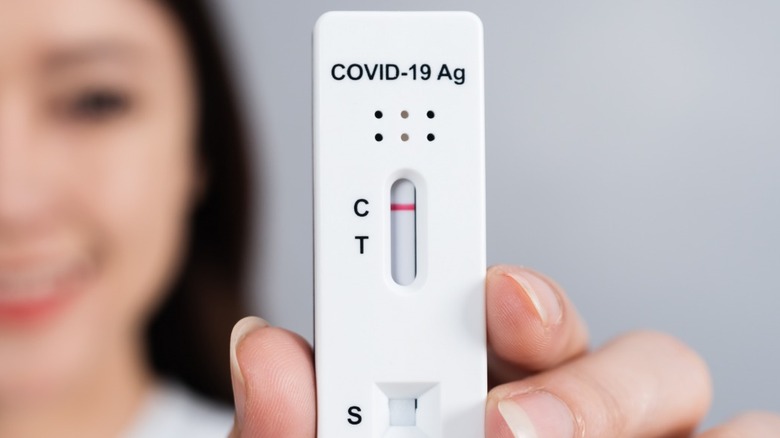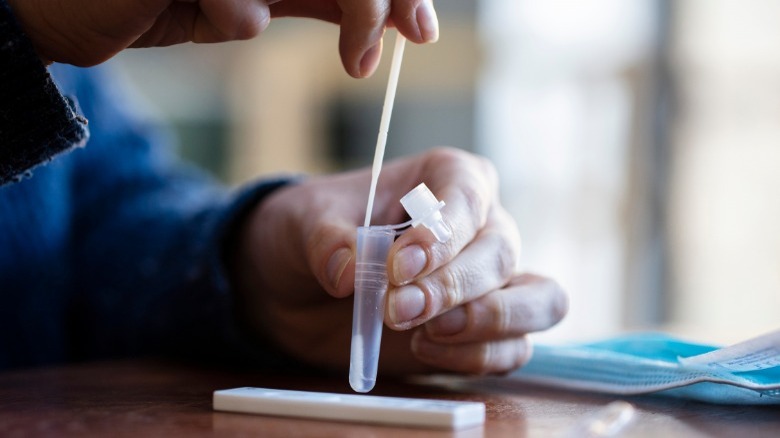How To Read An At-Home COVID Test Correctly
There have been over 101 million COVID cases and nearly 1.1 million deaths due to COVID since the onset of the pandemic nearly three years ago, according to the Centers for Disease Control and Prevention (CDC). Since the time COVID-19 began plaguing the world in early 2020, there have been numerous variants. Considering how frequently these new variants continue to spring up, COVID is likely here to stay in some form. Even with available vaccinations, COVID weekly cases in the United States remain high, hovering between 400,000 and 500,000 since the first week of December 2022, per the CDC.
Given how many variants we have already seen, it can be challenging to keep track of which variants are out there. At the moment, the strain that health experts say is leading the pack is known as BQ.1.1. According to the experts at Nebraska Medicine, 34% of COVID patients in the United States are currently infected with this strain. Not far behind is the strain known as XBB.1.5, which shows up in 28% of cases. While these are sub-variants of the original Omicron variant, experts say that the original Omicron variant is no longer circulating.
Though new COVID variants are likely to emerge, there are scientifically proven ways to protect yourself and others from becoming infected, including getting vaccinated and boosted, washing your hands frequently, avoiding indoor activities and close contact with others when possible, masking up in public places, and staying home if you test positive or have symptoms (per Nebraska Medicine).
What at-home COVID test results mean
By August 2022, there were 19 at-home rapid COVID tests available, per The New York Times.
Considering the many at-home COVID test options, you may be concerned about making sure you administer your test correctly. The good news is that these tests are fairly simple; however, it is pivotal to follow the directions carefully, Claudio Alvarado, an assistant nurse manager in the pediatric emergency department at UC Davis Children's Hospital told UC Davis Health. For instance, while the tests share similarities, some steps may vary.
First and foremost, before taking the test, wash your hands with soap and water for 30 seconds. Each test includes a collection swab, a collection device, and a small tube of liquid. Remove the swab from the packet and insert it into each nostril carefully, rotating five times against the inner wall. Then, insert the swab into the vial and swirl 15 times. For optimal results, be sure to extract all the liquid from the swab by squeezing the side of the tube while removing the swab. Squeeze three drops from the tube onto the collection device. Set a timer for 15 minutes. The "C" area of the test should reveal a line confirming the test is working. If the "T" area develops a line, this means your test is positive, per UC Davis Health.
While results are fairly accurate, Dr. Alvarado said it's possible to receive a false negative if you test during the early days of an infection, so re-test within a few days if you suspect you are infected.


